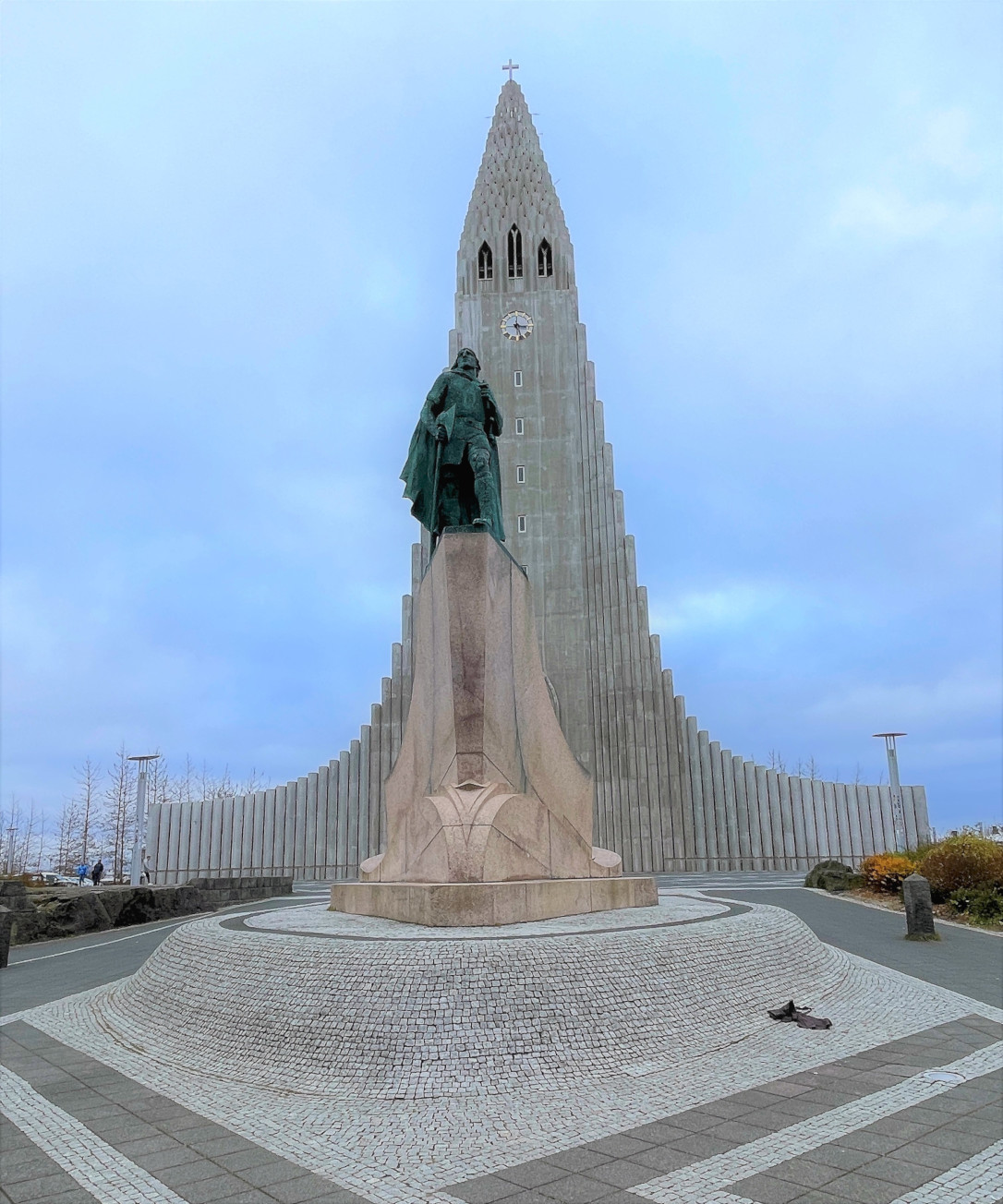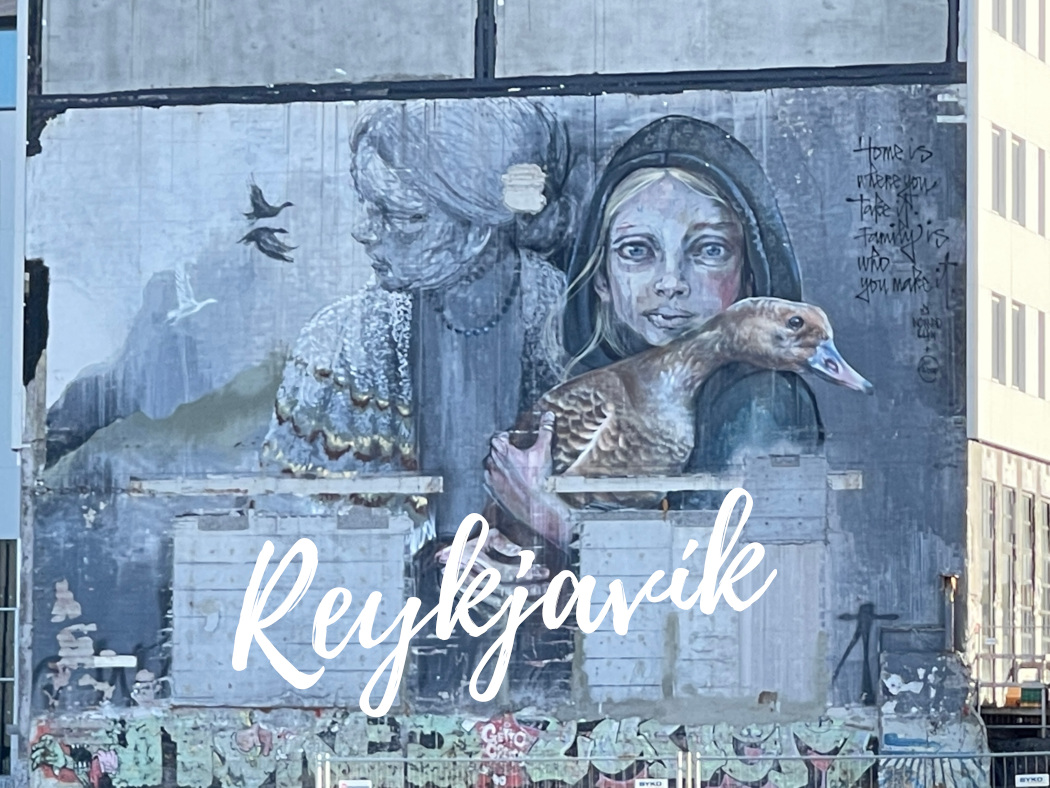 |
| Mjóstræti 3, also called Vinaminni |
Vinaminni is a big house located only minutes away from Ingólfstorg, Reykjavik. In 1885, the actress and women’s rights activist, Sigríður Einarsdóttir (1831-1915) spent her own money to have her childhood home, Brekkubær, torn down and a new house built in its stead.
 |
| A town map from 1801. In the upper right corner, number 51, is the turf house Brekkubær. Sigríður had it torn down when she had Vinaminni built. The Reykjavik pond can be seen in the bottom left corner. |
In 1895 the famous poet and lawyer Einar Benediktsson moved into Vinaminni. He was also one of the residents at Höfði. (I’m currently working on a book about the mysticism of the people of Iceland. Among the many stories I have included are stories of Einar’s hauntings and the hauntings in Höfði).
 |
| Mt. Esja, 1910, as seen from Vinaminni |
The distinguished livelihood of Vinaminni slowly diminished and by the end of WWII it had lost its stardom. By the 1960’s the rooms in the house were rented out to short-term guests. The house quickly became known for its heavy partying. Being so close to the city center, young adults would often stop by in search of a party. Later the city of Reykjavík purchased the house, but failed to put it to good use.
When
Sigríður had the house built, she didn’t design it to be a family home. Her vision was to build a place that she could use for educational purposes. She built it with her own money and wanted to establish a school for women (Kvennaskólinn), which she did in 1891. This is not to be confused with the Reykjavik’s School for Women (Kvennaskólinn í Reykjavik ), which was funded by the Government. Sigríður’s school was privately funded.Instead of teaching embroidery and knitting, she felt it was more useful to teach women how to design and sew clothes. Unfortunately, due to lack of funding, the money ran out and the school only lasted one year. Although the school for women had been shut down, other schools can trace their origins to this building.
In 1915, Sigríður passed away and Rev. Haraldur Níelsson took over the house. He was married to Sigríður’s niece, Bergljót Sigurðardóttir (1879-1915). In the early days of the Experimental Society, while Indriði Indriðason was the medium, the Reverend and Bergljót would hold séances at their home.
Across the street from them, on Mjóstræti 4, lived Einar H. Kvaran (founder of the Experimental Society) with his family. They frequently held séances in their home.
Tragically, that same year (July, 1915), Bergljót passed away only 35 years old. Three years later, on Oct. 2nd, 1918, Rev. Níelsson married Aðalbjörg Sigurðardóttir (1887-1974).
 |
| Bergljót on the left and Haraldur on the right |
At the age of 18, Aðalbjörg had gotten herself a degree in teaching, graduating at the top of her class. This was only the beginning of her journey. She attended numerous studies and courses throughout the years and even traveled abroad to further her knowledge. After traveling abroad to learn more about education, she became fascinated by the Italian physician and educator, Maria Montessori’s philosophy on education.
On a personal note, Aðalbjörg was a very religious and spiritual woman. Early on she sought the teachings of Krishnamurti and in 1912 she was one of the founders of the Theosophical Society of Iceland (Guðspekifélag Íslands). Spirituality was very important to Aðalbjörg and for 11 years (1927-1938), she traveled to Holland to take part in the annual national Krishnamurti meetup.
 |
| Ingibjörg with her friend, Unnur Thoroddsen during a Krishnamurti meetup in Holland. Unnur was also known to be clairvoyant. |
In addition to all of Aðalbjörg’s extraordinary accomplishments, she also wrote multiple articles and books throughout the years. She made several radio appearances and held countless lectures.
The Reverend was very supportive and proud of her endeavors. At the same time as he was happy about her fight for women’s rights, he felt that a woman could not get a holier or more meaningful right than the right to become a mother. I don’t think Aðalbjörg necessarily disagreed with this. She felt a woman could best prepare for motherhood by maturing and educating herself.
Aðalbjörg was known to have dreams that often seemed more like communication with the dead, rather than dreams. Soon after Rev. Níelsson’s death in 1928, Aðalbjörg had a dream where she was walking into a hospital room in Reykjavik. She saw the Reverend standing next to a bed with a patient lying in it.
Aðalbjörg had a friend who she frequently discussed mystical phenomenon with. A clairvoyant lady had told her friend that some old man was his guardian spirit. The night after, Aðalbjörg’s spirit contact from across the veil, came to her in a dream and asked her if she wanted to see who it was accompanying her friend. Aðalbjörg wanted to see who it was, so the spirit led her to her bedroom window and told her to look outside.
 |
| The Norwegian bakery on Fischersund and Vinaminni towering up behind it |
Soon after, Aðalbjörg met with her friend and told him about the dream. He then told her that it sounded like she was describing his sister who died when she was 19. He always thought if anyone of his dead relatives were with him, it would be her. Aðalbjörg didn’t know he had lost a sister.
A few days later, Aðalbjörg visited his home for the first time. As soon as she walked into the living room, her eyes locked in on a photo of a young woman. She had never seen this woman before, but recognized her right away as the woman in her dream. The woman in the photo was her friend’s sister who died at age 19.
Aðalbjörg was also known to do automatic writing where otherworldly beings took control of her hand. There were a couple of spirits who frequently took control. One of them was a 15 year old boy who recently passed away. One night, Aðalbjörg dreamed that the boy came to her and complained that his ship wasn’t being treated well. In the dream she followed the boy to his parents’ house. Once there, he led her upstairs and showed her a small dark corner next to the brick-layered chimney leading up to the roof. She had no idea the nook was there. The boy’s mom had stuffed some garbage in a suitcase, and from the garbage the boy pulled out his ship. He asked Aðalbjörg to make sure his mom got the ship and to tell her not to treat it so badly. Then she woke up.
The dream seemed quite meaningless and Aðalbjörg thought nothing of it. The following evening, she did her automatic writing. The boy came to take control of her pen and he was not happy that Aðalbjörg hadn’t talked to his mom like he had asked her to. He asked her to go visit her as soon as possible.
The day after, Aðalbjörg went over to the boy’s mother and told her about the dream. The boy’s mom explained that he had owned two or three small ships.
A little while later, the boy again took control over Aðalbjörg’s automatic writing, telling her that he now didn’t care what his mom did with his ships or the rest of his stuff.
These are but a few of Aðalbjörg’s many encounters with the spirit world. She didn’t do automatic writings for very long before she decided to stop. She felt they drained her for hours before and after each writing, which made it impossible for her to get any work done. Another reason was that for the most part, she felt there was never much proof the writings were real. She wasn’t sure whether it was her subconscious controlling the pen or someone else.
Sources:
Höfði
Einar Benediktsson
Vinnaminni, Morgunblaðið Jan. 23rd, 1998
Ásgrímur Jónsson
Grjótaþorp, Morgunblaðið, Oct. 09, 1977
Poem by Benedikt Gröndal for Sigríður Einarsdóttir
wikiart
Mittens for Queen Victoria
Maria Montessori
The Theosophical Society
Aðalbjörg Sigurðardóttir
Life of Aðalbjörg
Dream about Haraldur
The dreams
History of Child Protection Services
Child Protection Services regulations



